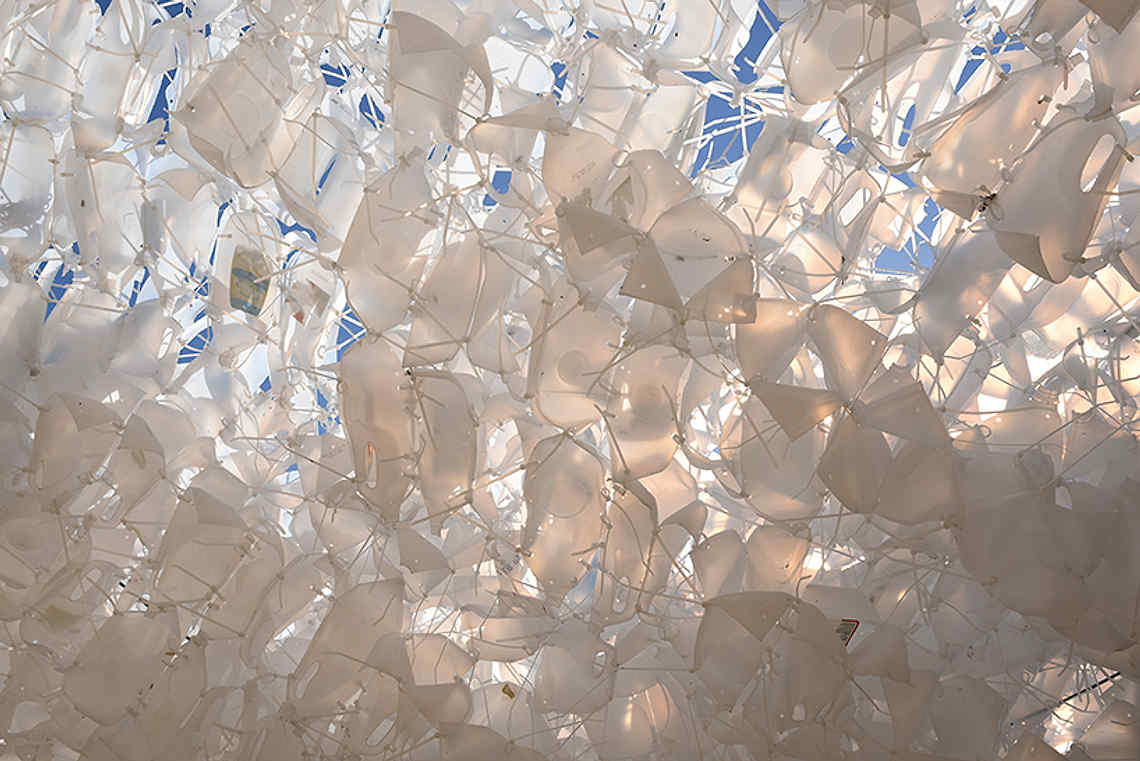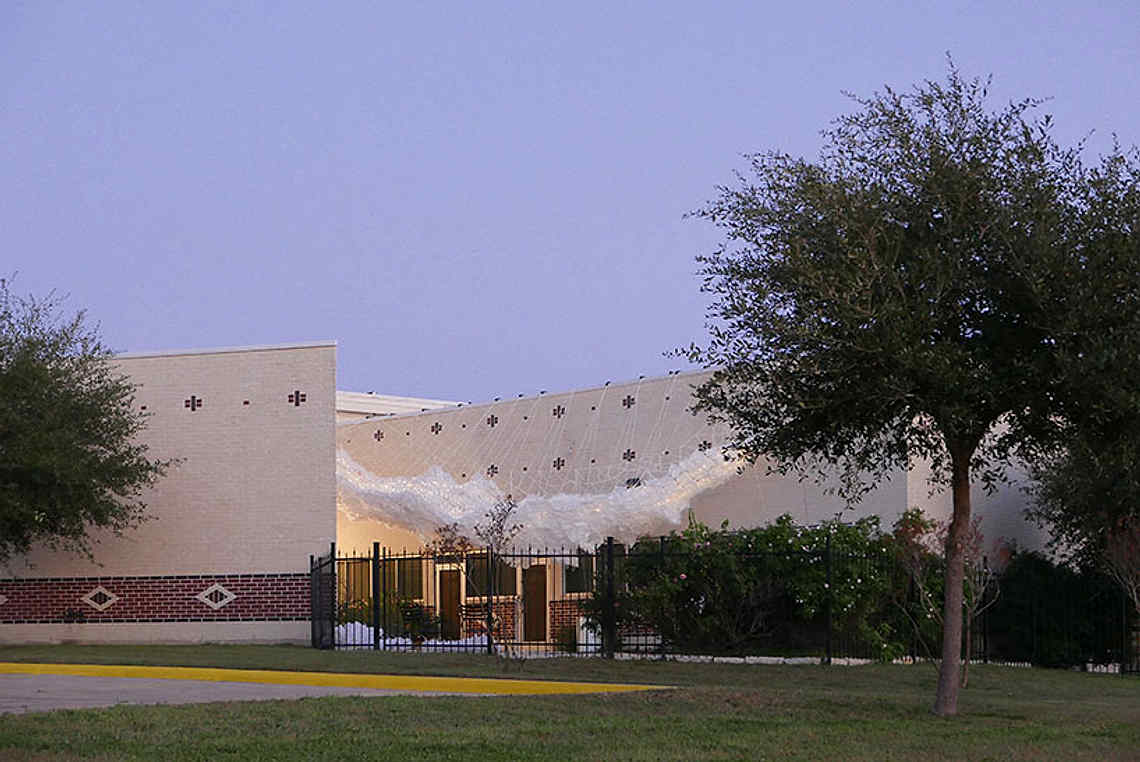Milky Way
2015Milky Way negotiates a trapezoid-shaped space at the Brazos Valley African American Museum in Bryan, Texas. A parasitic structure, Milky Way makes an ambivalent statement: at once invading the space with plastic waste and bringing ethereal qualities to the space by the varying degrees of translucency in the layering of the material.
Milky Way is an outdoor shading/lighting piece from 3,000 milk jugs. Connecting two diagonal corners of a rose garden, the suspended piece contracts at the ends and expands in the middle, a shape made of two gentle convex curves. The interstitial space between Milky Way and the building becomes a negative imprint of the piece, which extends to the street intersection alongside the three-sided garden.
Milky Way is composed of two layers. The top layer is an even grid. The bottom layer is a sequence of twisted strands. Both layers are constructed from the same repetitive module in order to suit the skill level of all the participants who helped to building the piece. On top of the piece, solar-powered lights are evenly distributed. As gravity determines the form of Milky Way, the middle portion curves down. The overlapping of the identical modules contributes to the changing translucency in the changing light of the day.
A labor-intensive project, the building of Milky Way required some 100 volunteers. They ranged from middle school, high school, to college students, young and old from the nearby neighborhood and various enthusiasts. After two years of effort, including collecting milk jugs, washing and cutting them, making modules from the cut pieces, design and assemblage, and final installation, Milky Way is finally ready for the holiday season—through transformation, allowing a mundane waste to assume a pleasing role in the life of a community.
Cecilia Giusti and Wayne Sadberry curated the project. John Nichols provided structural engineering for the installation. Jim Titus managed the initial processing of milk jugs and additional mechanical needs for the installation. The College of Architecture Diversity Council at Texas A&M University supported the project financially. The opening was held on December 4, 2015.





